By Jide Uwechia
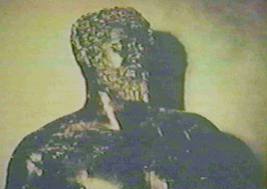
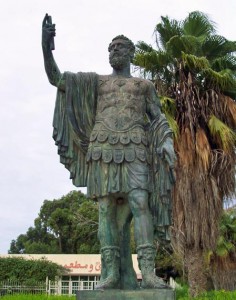 Septimus Severus was a Numidian African Moor from North Africa. He was the founder and ancestor of all the members of the Severan Dynasty.
Septimus Severus was a Numidian African Moor from North Africa. He was the founder and ancestor of all the members of the Severan Dynasty.
“Septimius Severus was the first Roman emperor not born and raised in Italy. His father’s family originally came from Libya (Leptis Magna) and his mother’s family were Etruscans (Italian).
His grandfather, a Muurish knight of the Roman empire, owned land near Rome, but Septimius had grown up in Libya, Africa with his father.”
“Septimius married Julia Domna, a Syrian, daughter of a high priest. The name Domna is derived from the archaic Arabic word dumayna, meaning ‘black’. Septimius and Julia had two sons, Caracalla, the elder, born in AD 188, and Geta.”
Because Septimius’s family were highly placed Roman citizens, he was entitled to be educated in Rome. Upon graduation he became a lawyer and practised briefly in Rome.
His family background, education and experience placed him within a strong network of influence and privilege. He had solid support and patronage within the highest ranks of the empire.
He became a Roman senator at the age of 18 years upon an imperial appointment sanctioned by Marcus Aureilus in 175 AD.
He then joined the imperial legion, as an officer. From the age of 24 he took part in campaigns in Spain, Syria, Gaul, Sicily and Athens. Soon he had attained the rank of a military commander in the imperial legion, and became a member of the Praetorian Guards.
He also served as the governor of Gallia Lugdunensis and Sicily and, towards the end of Commodus’ reign, he was made consul in AD 190.
The Africans in Rome
As should be obvious to anyone with any knowledge of Roman history, black people in generally were foundational in the demographics of Rome. It is generally known that the kingdom that preceded Rome, Etruria, was basically built by a black and brown people who had immigrated to the Roman peninsula via North Africa.
Roman empire thus had many prominent black people, some being aboriginal Europeans, otherwise known as European Muurs, others came from Anatolia from the regions of Smyrna, Sardis, Cappodocia and Syria. Many of the ancient Bishops of the orthodox church were from this branch of black people, and their iconic images still exist today to bear testimony to their ethnicity.
One also had Muurs from Africa, Ethiopia and Libya. Muurish Africans from Morocco, from Egypt, as far as the present day Nigerbend countries like Nigeria and Mali were also prominent in the Roman empire. Many were landed aristocracy like the family of Septimius Severus, (and others such as Gaius Nigrinus etc).
Rome actively sought out the Muurish Africans because they were the founts of knowledge, religion and culture. Egyptian and Ethiopian priest presided over the shrines of Isis, which were prevalent all over the Roman empire.
Engineering geniuses from Alexandria, from Thebes, Egypt and others from Kart Hadash, from Meroe, and Abbyssinia all flocked Rome because there was a sore need of them in the construction and finishing of the imperial building projects.
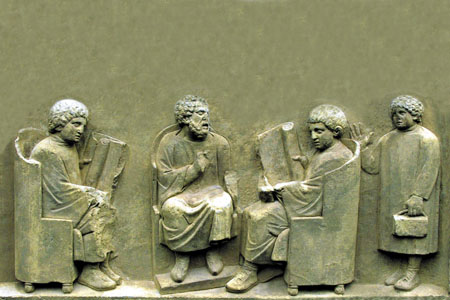
Master stone cutters of Nubia and Ethiopia, master stone masons of Egypt and Libya, master builders of Anatolia, Cretes, Cyprus, Malta and southern Greece, all black, all children of Africa, were the real builders of the cities of the Roman Empire. It was almost comparable to how black people built the Americas, just that in Roman, those builders were celebrated nobility, whereas in the case of Americas, there were degraded as slaves. (Which is why it is generally said that ancient Romans invented nothing new and simply built on the foundations of more sophisticated but more ancient civilizations).
The point cannot be overemphasized. The Africans were foundational to the building and the expansion and the success of Rome. Thus, at the time of Septimius Severus, the African Muurs had gotten so influential and so numerous in the Empire that it was only a matter of time before they would take over the reigns of command.
The African called Laetus: Wars and Conspiracy
In those days, there were lots of discontentment with the politics of the day, both amongst the commoners and the elites. Rome was being ruled by a carry over from the days of Emperor Marcus Aurelius, Emperor Commodus, who was hated by everyone including those entrusted to protect him.
In the military, African muurs had become so strategically important that they even had a circle which determined the overarching contours of the empire’s military politics. It was a shadow government of sorts that ruled Rome from behind the curtains. This secret group of Muurish politicians and military officers were sick and tired of Emperor Commodus and had resolved to get rid of him one way or the other.
Right at the heart of the midst of the plot to kill Emperor Commodus, was an African friend of Severus’ called Laetus. He was the then current grand master of the secret cabal that ruled Rome. Laetus was the Praetorian Prefect. The praetorian prefect was the head of the palace guards that protected the person of the Emperor. The palace guard was a legion of elite soldiers, trained to the highest standard who maintained the security of the Imperial circle. Thus next to the Emperor himself, the office of the praetorian prefect was the most powerful pedestal for affecting events in the empire.
In those treacherous days, when plots swirled in dark alleys of Rome, and the dogs hung in the shadows waiting for the moment the prey lost its wariness, and every walls had ears, Prefect Laetus could not afford to be caught with his guards down. Many had been so caught and had paid the ultimate price. So, Laetus placed people he could rely on in key positions of the empire. And so his friend and African brother Septimus Severus was put in place as governor of Upper Pannonia and the commander of the imperial legion.
Pannonia was a province of the Roman Empire, corresponding to present-day western Hungary and parts of eastern Austria, as well as portions of several Balkan states, primarily Slovenia, Croatia, and Serbia (Vojvodina). The Pannonians were mainly Illyrians, but there were some Celts in the western part of the province.
The army commanded by Septimius Severus in Pannonia was no odinary one. For one it was mostly composed of a corp of crack Muurish soldiers recurited in Mauritania and the Niger bend. They were all dreadlock soldiers. They were known as the Illyrian legions.
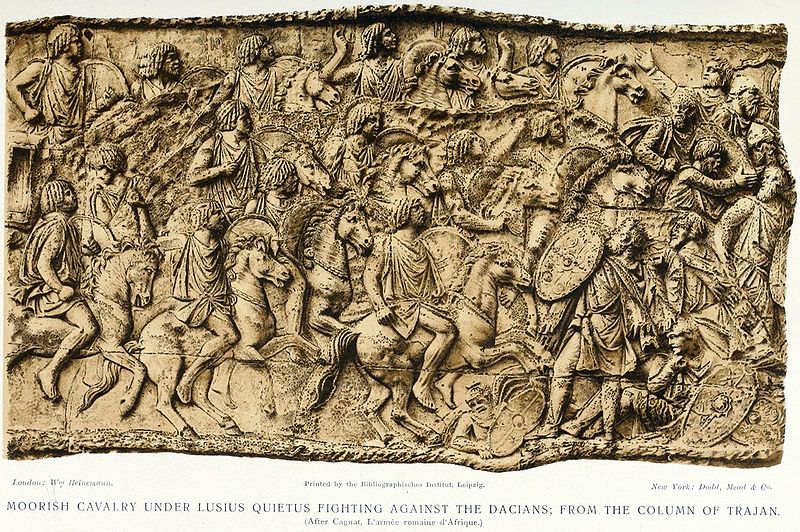
Master horse men, like those immortalized by Emperor Trajan in the Trajan’s Column’s artwork, they were the striking edge of the imperial army. They were the cavalry riders of the Maghreb tearing through the wind on their “arabian breed horses”, they were the master bow men of Nubia, they were the toughest and the most fearsome battallion that the Roman legion ever deployed in battle.
They were the soldiers that pacified Pannonia, including Moeria, Bulgaria, Solvenia, Romania, Albania and the rest of central Europe. They brought peace, order and government to those regions. They protected them from the depredations of the barbarian Goths, and the slavs, the teutonics and the Alanics.
Laetus further positioned his other Muurish proteges like Pescennius Niger, a black Italian, (Muurish career officer from Italy), whose family roots probably stretched to the Niger bend in the Sahara, probably the present day Nigeria or Mali, and Clodius Albinus, another African from North Africa, into very powerful positions. Although named Albinus, meaning fair skin, Clodius was a black African muur. It be be recognized that fair skin Africans are as numeorus as dark skin Africans in North and North West Africa.
Niger was the made the overall commander of the eastern legion based in Egypt and Syria. Part of this eastern legion was the Theban legion famed in history for its awesome deeds in battle. It competed with the Pannonian Illyrian legion for the title of the toughest and the fiercest of the Roman imperial legions.
Clodius was made the commander of the legions in Britain. Britain was a backwater province of Rome, but it was strategic in that it was isolated from the rest of Europe and always had a tendency to being a power unto itself. It was full of restive tribes constantly testing the battle readiness of the Roman army. Thus the battle readiness of British based Roman troops were never in doubt.
Other commanders, and politicians too many to be named were equally dispersed and strategically positioned by this circle of African conspirators as they manouvered with those in opposition for the ultimate prize in Rome, the Imperial crown.
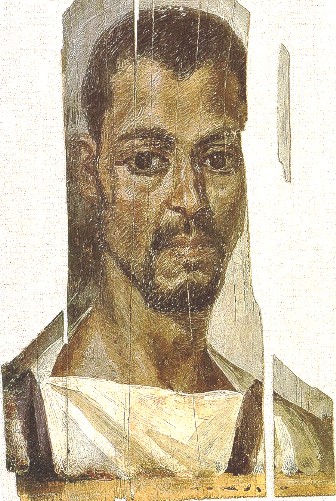
High Stakes
The plot to kill Commodus succeeded, for soon he was dead. Pertinax became the next emperor. Pertinax himself did not last very long, as he was murdered himself shortly after assuming the throne.
After Pertinax was murdered, Didius Julianus bought the throne from the praetorian guard. The hidden hand of the African grand master Laetus was soon discovered and he was arrested, tried and summarily executed for his involvement with the murder of Commodus. The palace continued its purge of Laetus’ proteges, and appointees.
It was time for the African brotherhood of Rome to strike a death blow against the the current regime. There was a haste to it as their grand master had just been summarily executed and the executioner was coming for the rest of them, eventually.
The three main people who had been placed in powerful positions by Laetus all found it was time to act. The three were Severus, Pescennius Niger and Clodius Albinus. The coup plot and the plotters were ready. However, their interest and their ultimate aims differed.
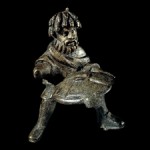
The Coup d’etat succeeds and Severus proclaimed Emperor
Severus had himself proclaimed emperor by his troops at Carnuntum in what is now Austria, in AD 193. He appeared to have the support of the Roman senate in Rome, in doing so. Meanwhile, Pescennius Niger was hailed emperor by his troops in the east. Clodius Albinus did not take such a drastic step. He waited in the wings and bided his time.
But Septimus sensing the danger that Clodius posed, and the advantage his cooperation would bring him, quickly neutralized Clodius Albinus, by offering him the position of Ceasar (junior co-emperor). The offer was only made with the intention of buying time for Severus.
Clodius Albinus was led to believe that he would be a co-emperor with Severus albeit in a junior role, and that he would be Severus’ successor in the event of death.
Clodius apparently accepted this offer leaving Severus free to make a rapid advance on Rome. On hearing news of his approach against Rome with no less than 16 legions under his command, all opposition against him within the capital city simply crumbled.
As earlier observed, the Muurish circle within the Roman government had senators as well as military men in its network working to advance the coup d’tat. Recall that even Severus’ grandfather was a member of the Roman senate and an elite in the Roman imperial circles. Thus, shortly before the arrival of Severus army at Rome, the fifth columnist in this Muurish brotherhood arrested Emperor Julianus. He was then tried and indeed sentenced to death by the senate. He was thereafter executed in his deserted palace.
Once he arrived in Rome, Severus had all those involved in the murder of Pertinax, and Laetus executed.
Severus also trebled the number of the city cohorts (the police of Rome) and doubled the fire brigade (vigiles) in order to increase the city’s security.
Severus disbanned the praetorian guard which had proved such a threat to many emperors. Its members were banished from Rome. He replaced them with a force double in size. This was a force of his own men drawn from his army especially the famous Danubian legions made up of fierce Muurish horsemen.
As was the custom with new Emperors, and to raise morale in his army (his institutional power base), he increased their pay from three hundred to five hundred denarii a year.
War between two African Roman Emperors:
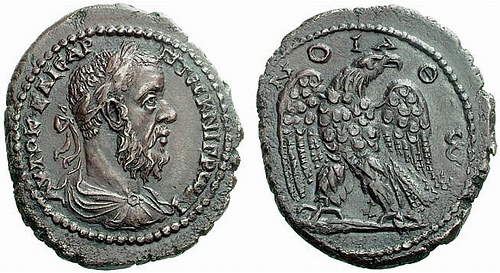
Oracle of Delphi
Meanwhile, Pescennius Niger had been declared the Emperor in the East and he appeared to be making moves to march his army to Rome. A civil war loomed in the horizon.
“Now when the confusion in the state was at its height, inasmuch as it was made known that there were three potential emperors, Septimius Severus, Pescennius Niger, and Clodius Albinus, the Delphic oracle was consulted.
The priest of the Delphic Apollo was asked which of them as emperor would prove of most profit to the state, whereupon, it is said, he gave voice to a Greek verse as follows:
“Best is the Dark One, the African good, but the worst is the Albino (light skin) One.”
And in this response it was clearly understood that Niger was meant by the Dark One, Severus by the African, and Albinus by the Albino or fair skin One.
Thereupon the curiosity of the questioners was further stirred, and they asked of the oracle who would really win the empire. To this the priest replied with further verses as follows:
“Both of the Dark and the Light skin Ones shall the life-blood be shed all untimely;
Empire over the world shall be held by the Muur, the native of Carthage.”
Coin of Pescennius Niger
War Begins:
Having firmly established himself at Rome and knowing his western borders toward Albinus secured with his grant of the caesarship, Severus then moved eastwards to deal with the challenge posed him by Pescennius Niger.
In AD 194 Severus Severus crushed Niger’s forces at Issus on the very plain on which Alexander the Great had defeat Darius some 500 years earlier.
The supporters of Niger were suppressed, many of them fleeing to the Parthians, who had helped Niger in his fight.
In order that no future governors of Syria should ever proclaim themselves emperor, the powerful province was split in two; Coele-Syria and Phoenicia.
There is preserved, a poetic eulogy in Greek which, rendered into Latin, runs as follows:
“Glorious Niger stands here, the dread of the soldiers of Egypt,
Faithful ally of Thebes, willing a golden age.
Loved by the kings and the nations of earth, and by Rome the all golden,
Dear to the Antonines, aye, dear to the Empire too.
Black is the surname he bears, and black is the statue we’ve fashioned,
Thus do surname and hue, hero and marble, agree.”
Severus refused to erase the poetic eulogy when this was proposed by his prefects and advisers. He had replied that as follows: “If indeed he was such a man, let all men learn how great was the man we vanquished; if such he was not, let all men deem that such was the man we vanquished; no, leave it as it is, for such he really was.””
Britain

Soon after these events, Severus now turned his attention to Clodius Albinus, his other African rival for the throne of the Romans.
He set out on a series of provactive acts to disquiet Clodius Albinus, and finally declared his elder son Caracalla to be Caesar and therefore his heir late in AD 195. This was clearly a unilateral revocation of the subsisting agreement between him and Albinus, where-under Albinus was the Ceasar and was understood to be the successor to the throne.
In effect it was a veiled challenge and Albinus took it up. In AD 196 Albinus had himself hailed Augustus, and the emperor by his troops. He left Britain, set out across the channel into Gaul with 40’000 men, collecting more forces as he moved on towards Rome.
Severus, having only briefly returned to Rome in AD 196-7, in January AD 197 set out for his power base on the Danube, where he had stationed some of his best and most loyal African army. From there in Pannonia he began a march west, through Noricum, Raetia, Upper Germany and Gaul, gathering troops as he went.
The huge armies had a skirmish first at Tinurtium. Severus achieved victory. But the manouvering continued.
The full battle followed at Lugdunum (Lyons) on 19 February AD 197. It was a very close battle. At one point Severus was knocked down from his horse and almost lost his life.
The battle hung in the balance for a long time, but alas Severus’ side won. Clodius Albinus fled into the town of Lugdunum (Lyons) where he committed suicide rather than be captured alive.
The province Britain was thereafter, like Niger’s Syrian province, divided into two parts; Britannia Superior and Inferior, with the capital of one in London, and the other in York, to prevent the occurrence of another rebellion.
Mesopotamia
Now, Severus attentions once more turned back to Parthia. The war was brief, for Parthia was weak at the time. By the end of AD 197 the capital Ctesiphon was captured.
Thereafter Mesopotamia was once more annexed as a province of the Roman empire, except for the city of Hatra. This strategic fortress city was besieged twice without success, denying Severus complete domination of the Mesopotamia regions.
Rome
Severus was one of the outstanding imperial builders. He built a very large number of ceremonial buildings – and inscribed on them his own name to remind future generations of his works. His most famous work was the Triumphal Arch of Severus at the Forum of Rome, which was erected to bear witness to his reign.
It can be said that Severus brought grand architecture to Rome in a big way. His home town Leptis Magna served as an example of the finest pieces of Roman architecture and urban planning. Many of the biggest, most lavish and most important structures built over the 500 years of imperial Rome were commissioned by Severus and his dynasty. They set a style which was copied through out the life of the empire.
Many of Severus’ grand buildings echoed the architectural styles of the Egyptians, the Ethiopians, the Meorites, the Syrians, and the Carthaginians, and the so-called classical Greek styles. He brought a synthesis of the North African grand and ancient celebrated architectural designs to Rome.
The triumphal arch for example echoes many versions of such archs found in Carthage, in Mauritania and Morocco, and in Egypt. It is generally called the Muurish gate, and versions of it can be regularly seen anywhere on earth where any population of Muurs settled and became prominent.
Death of Severus
In AD 208 Severus left for Britain to subdue the restive tribes of Celts who had refused to surrender to the hegemonic power of the empire.
He built a large military army and conducted campaigns deep into Scotland. However he could not bring the restive tribes under control and a relentless guerilla war kept going on.
With the campaigns to conquer the Caledonian territories not being of any lasting success, Hadrian’s Wall instead was reconstructed, this time in stone, to defend the frontier.
Emperor Severus fell ill at Eburacum (York), where he died at the age of sixty-six (4 February AD 211).
His sons Caracalla and Geta brought an end to any military campaigns into the Scotland which were still underway and then set out home, carrying the ashes of their father to Rome, where they were laid to rest in the Mausoleum of Hadrian. Soon after he was deified by the senate.
Severus Septimus was succeeded by his sons Caracalla and Geta, and that began the long lasting and highly influential Severan dynasty of Rome.
‘Keep on good terms with each other,’ is said to have been his last advice to his sons, ‘be generous to the soldiers, and take no heed of anyone else !”
Septimus Severus
Of all the Roman Emperors, he is the most significant because he was the game changer.
His reign marked the imperial epogee of Rome, in terms of geographical expansion and massive construction.
Septimus Severus, one could say was one of the greatest Emperors if not the greatest Emperor of Rome.
He was from Mauritania. A Numidian, African Moor by birth.
Brown skin and woolly hair!
By
Jide Uwechia
June 16th, 2011
See
Mark Hyman, Blacks fought to rule Rome, The Afro American March 3 1984
Euorpe (Ancient Rome) conquered by Africans: http://people.tribe.net/49167892-07dc-452d-940f-1671d614e58b/blog/deb5ef2c-d766-44c4-aab6-de826c0cd834
http://penelope.uchicago.edu/Thayer/E/Roman/Texts/Historia_Augusta/Pescennius_Niger*.html
http://www.nationalarchives.gov.uk/p…mes/romans.htm
http://www.roman-empire.net/decline/sept-severus.html
http://www.britannica.com/EBchecked/topic/441428/Pannonia


This is a great article with a whole lot of truths. It has clarified a lot of questions I’ve always asked myself about Africa, Blacks and Moors. Thank you. I also thank all the contributors.
I believe this shows more than anything that the Romans were a culture who did not even entertain the thought that skin color was in any way connected to a man’s capabilities: of course, the Romans thought blue eyes and blonde hair were associated with the German and Slavic tribes who they considered barbarians. The original Romans who came from latinum were brown skinned Mediterranean people with dark hair and either green or brown eyes who looked similar to southern Italians or Greeks, but their earliest allies were Spaniards, Arabs, and Egyptians, who fought with them against the muurish republic of Carthage. Although muurish geniuses like Hannibal Barca fought valiantly, eventually Carthage was destroyed. Carthage itself was destroyed, but the former is empire’s people eventually got into positions of power because Rome was a meritocracy, and the brightest people, like the
Severans, could get ahead. ’Barbarian’ meant someone who was not a Roman citizen, and a bright person from a muurish family of Roman citizens would have been welcomed with open arms into the Roman elite because even the idea of discrimination against a Blackman because he had dark skin would have seemed absurd to these cultured and correct thinking people